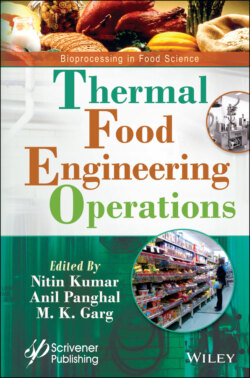Читать книгу Thermal Food Engineering Operations - NITIN KUMAR - Страница 26
1.3.3.2 Advantages and Disadvantages
ОглавлениеAdvantages:
1 Suitable for large and thick foods
2 The investment cost is less or Low maintenance costs
3 Easy to control and understand [59]
4 Improves the level of the moisture
5 RF is energy efficient
6 Over dehydration and heating is prevented on the surfaces
7 The shortcomings faced in energy or heat transfer controlled using
8 shorter process lines [79]
9 Increased throughput
10 Simpler construction [54]
Disadvantages:
1 Risk of arching
2 The frequency band is narrow
3 Occupy large floor space [59]
4 The high initial capital cost of equipment and operating cost
5 Fluctuations in electrical costs
6 Different designs and applicators required to meet product-specific requirements [79]
7 Reduced power density [54]
Using a good quality of applicator’s design with specific fine-tuning, technologically advanced tools and highly skilled technicians sums up to be an efficient RF system.
An exemplary RF system would have greater penetration depth, the volumetric heating advantage of dielectric heating than other techniques, along the hybrid systems produce effectual, swift, and graded results [79].
